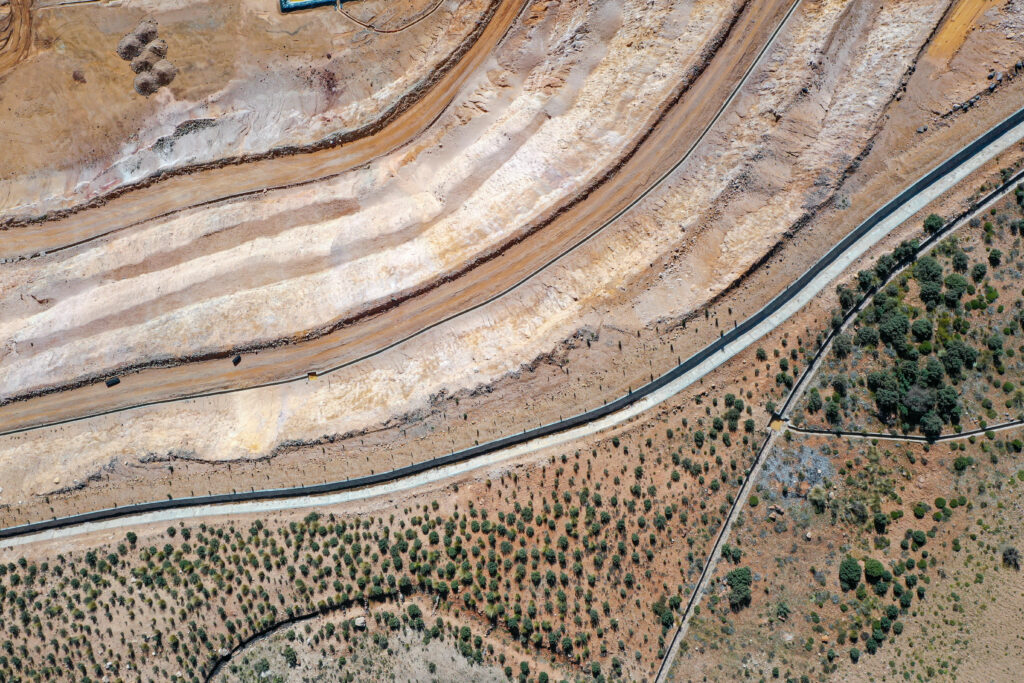How Our Environmental Experts Are Advancing Industry Dialogue on Sustainable Remediation.
At Douglas Partners, we’re proud that our colleagues are part of an evolving conversation about the future of contaminated land management—one that goes beyond compliance to explore resource recovery, sustainability, and long-term value creation.
In their recently published article in ALGA’s e-chronicle, our colleagues John Russell and Dawit Bekele present a compelling argument for a shift in how we approach contaminated land remediation.
Titled “Unlocking Value from Contaminated Sites – Contaminated Soil and Demolition Waste as a Recoverable Resource”, their piece offers both technical insight and forward-thinking strategy, outlining how environmental engineering can embrace circular economy principles to better serve industry, communities, and the environment.
In this post, we take a closer look at the key themes from the article and why they matter to our clients, partners, and peers in the industry.

The Challenge: Managing Contaminated Sites in a Resource-Conscious Era
Australia’s urban centres are experiencing growing demand for space, driving the redevelopment of historically industrial or otherwise impacted land—so-called brownfield sites. These sites present unique opportunities, but also complex challenges related to soil contamination, legacy waste, and environmental risk.
Traditionally, contaminated land remediation has focused on removing hazards to meet health and environmental standards, with significant volumes of soil and waste transported to landfill. But as John and Dawit point out, this model can overlook material that is safe, reusable, and potentially valuable—especially when considered through a fit-for-purpose lens.
In essence, the article asks: Are we leaving value on the table when we send recoverable or treatable materials to landfill?

Circular Economy Thinking in Environmental Engineering
Central to the article is the concept of applying circular economy principles to environmental engineering practices. Rather than treating waste as the endpoint of remediation, the circular model encourages us to evaluate what can be:
- Recovered or recycled (e.g. crushed concrete or brick from demolition),
- Treated and reused (e.g. mildly impacted soil suitable for subgrade use), or
- Reclassified post-treatment based on detailed soil testing and risk assessment.
This marks a shift in thinking—from risk avoidance to risk management and reuse, underpinned by science and guided by regulatory frameworks.
At Douglas Partners, this is increasingly reflected in our approach to remediation strategies. We conduct detailed site investigations (DSIs) and material characterisation, often revealing that a significant portion of site material can be safely integrated into the redevelopment and/or treated off-site at licenced facilities, reducing both environmental impact and project costs.
Highlighting Innovation Through Practice
In their article, John and Dawit draw on examples from recent work to illustrate how contaminated sites can be transformed into sources of reusable material. Through rigorous soil testing, environmental modelling, and collaboration with regulators, they demonstrate how risk-based reuse of material can lead to:
- Reduced landfill dependency,
- Lowered carbon emissions from truck transport,
- More efficient construction timelines, and
- Increased alignment with sustainability objectives.
Their piece positions environmental engineers not simply as problem-solvers, but as facilitators of resource recovery, integrating geotechnical, environmental, and economic factors into site strategy.

Regulation and Opportunity
Australia’s environmental regulatory landscape is evolving to support more sustainable practices. The authors note that while frameworks like the NSW EPA Waste Classification Guidelines do provide pathways for reuse, these are often underutilised due to uncertainty, conservative assumptions, or a lack of technical expertise in navigating reuse thresholds.
This is where the role of consultants—particularly those with cross-disciplinary expertise in environmental engineering, soil science, and regulatory engagement—becomes critical. As John and Dawit argue, successful reuse depends not just on identifying opportunities, but on substantiating them through data, engaging proactively with industry, authorities, and aligning with end-use requirements.
Their article encourages industry players to think critically about existing practices, and to embrace a more data-informed, sustainability-driven approach to remediation.
Why This Matters for the Industry
The publication of this article in ALGA’s e-Chronicle also reflects a broader movement within the environmental consulting sector. There is increasing pressure, and increasing opportunity, to:
- Design remediation projects with resource efficiency in mind,
- Apply circular economy thinking to site development,
- Provide clients with cost-effective, sustainable solutions, and
- Demonstrate environmental stewardship in land reuse.
As developers, regulators, and consultants face tighter environmental controls and more ambitious sustainability goals, the insights shared by our team help to chart a course toward smart, science-backed reuse strategies that benefit all stakeholders.
Driving Innovation at Douglas Partners
At Douglas Partners, we are committed to pushing the boundaries of what’s possible in contaminated land remediation. Our environmental engineering teams work across Australia to help clients turn site challenges into value-driven solutions, with services spanning:
- Soil and groundwater testing,
- Remediation action plans (RAP),
- Waste classification and material reuse assessments,
- Environmental due diligence, and
- Stakeholder and regulatory engagement.
Our experience shows that even modest changes in how contaminated sites are assessed and managed can lead to significant environmental and economic gains.
Read the Article
📘 Unlocking Value from Contaminated Sites – Contaminated Soil and Demolition Waste as a Recoverable Resource
📍 Published in: ALGA e-chronicle
✍️ By: John Russell and Dawit Bekele, Douglas Partners
🔗 Access the article here
Final Thoughts
As urban redevelopment accelerates and sustainability expectations rise, the way we manage contaminated land must evolve. John and Dawit’s article is a call to think more strategically—embracing circular economy approaches grounded in science, and realising that what was once “waste” might in fact be an asset in disguise.
At Douglas Partners, we believe in leading with evidence, expertise, and environmental integrity.
We thank ALGA for the platform to share this important work—and we look forward to continuing this dialogue with partners across the sector.
